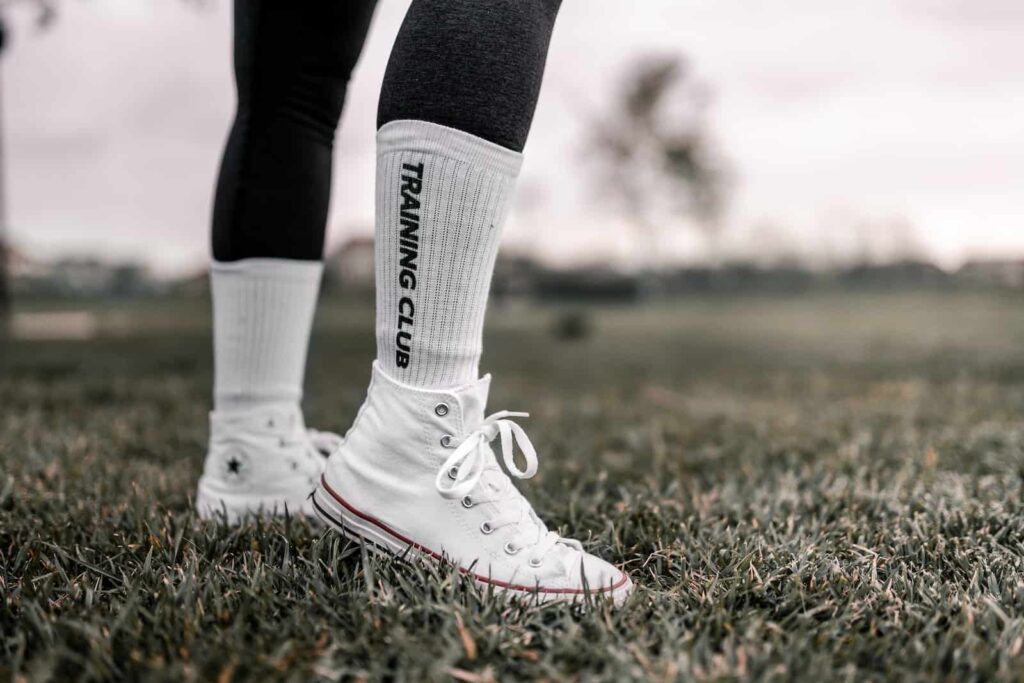When it comes to hitting the gym, most people focus on the right sneakers, clothes, and accessories. However, one essential item that often gets overlooked is gym socks. Wearing the right socks can make a significant difference in comfort, support, and overall performance during a workout. In this article, I’ll be sharing our top picks for the best gym socks to help you maximize your workout.
Best Gym Socks for Specific Workouts
Running
When it comes to running, the best gym socks are those with moisture-wicking properties to keep your feet dry and prevent blisters. Look for socks with breathable materials such as mesh or synthetic fibers. The socks should also have cushioning in high-impact areas such as the heel and ball of the foot. A great option for runners is the Balega Hidden Comfort Running Socks. These socks are made of moisture-wicking materials and have extra cushioning in the heel and toe areas for added comfort.
Weightlifting
For weightlifting, you want socks that offer stability and support. Look for socks with compression technology that can help improve blood flow and reduce fatigue. Additionally, the socks should have a snug fit to prevent slipping and sliding. A great option for weightlifters is the Nike Elite Cushioned Crew Socks. These socks have a compression fit and extra cushioning in high-impact areas, making them ideal for weightlifting.
Cross Training
For cross-training, you want socks that offer a combination of support, cushioning and breathability. Look for socks with a blend of synthetic and natural fibers to provide both comfort and durability. A great option for cross-training is the Under Armour Charged Cotton 2.0 Crew Socks. These socks have a blend of cotton and polyester, making them comfortable and durable. They also have added cushioning in high-impact areas and moisture-wicking technology to keep your feet dry.
Top 5 Picks for the Best Gym Socks
1/5. Balega Hidden Comfort Running Socks
2/5. Nike Elite Cushioned Crew Socks
3/5. Under Armour Charged Cotton 2.0 Crew Socks
4/5. Injinji Run Lightweight No-Show Toe Socks
5/5. CEP Compression Sleeves
Things to Consider When Choosing Gym Socks
Material
The material of the sock is an essential factor to consider when choosing gym socks. Look for socks made of synthetic fibers such as polyester or spandex. These materials are durable, moisture-wicking, and provide a snug fit.
Cushioning
Cushioning is another essential factor to consider when choosing gym socks. Look for socks with extra cushioning in high-impact areas such as the heel and ball of the foot. Cushioning helps absorb shock and reduce the risk of injury.
Fit
The fit of the sock is also important. Look for socks that provide a snug fit without being too tight. Socks that are too loose can slide around and cause blisters, while socks that are too tight can restrict circulation.
Frequently Asked Questions About Gym Socks
Q: How often should I replace my gym socks?
A: It is recommended to replace your gym socks every six months or sooner if they become worn or damaged.
Q: Can I wear regular socks to the gym?
A: While you can wear regular socks to the gym, they may not provide the same level of support, cushioning, or breathability as gym-specific socks.
Q: Do I need different socks for different workouts?
A: Yes, different workouts require different types of socks. For example, running socks should have moisture-wicking properties and added cushioning, while weightlifting socks should have compression technology and a snug fit.
Conclusion
In conclusion, choosing the right gym socks is essential for comfort, support, and overall performance during a workout. When selecting gym socks, consider the type of workout, material, cushioning, and fit. Our top picks for the best gym socks include the Balega Hidden Comfort Running Socks, Nike Elite Cushioned Crew Socks, Under Armour Charged Cotton 2.0 Crew Socks, Injinji Run Lightweight No-Show Toe Socks, and CEP Compression Sleeves. Remember to replace your gym socks every six months or sooner if they become worn or damaged, and always choose socks that are specific to your workout needs.














Comments are closed.